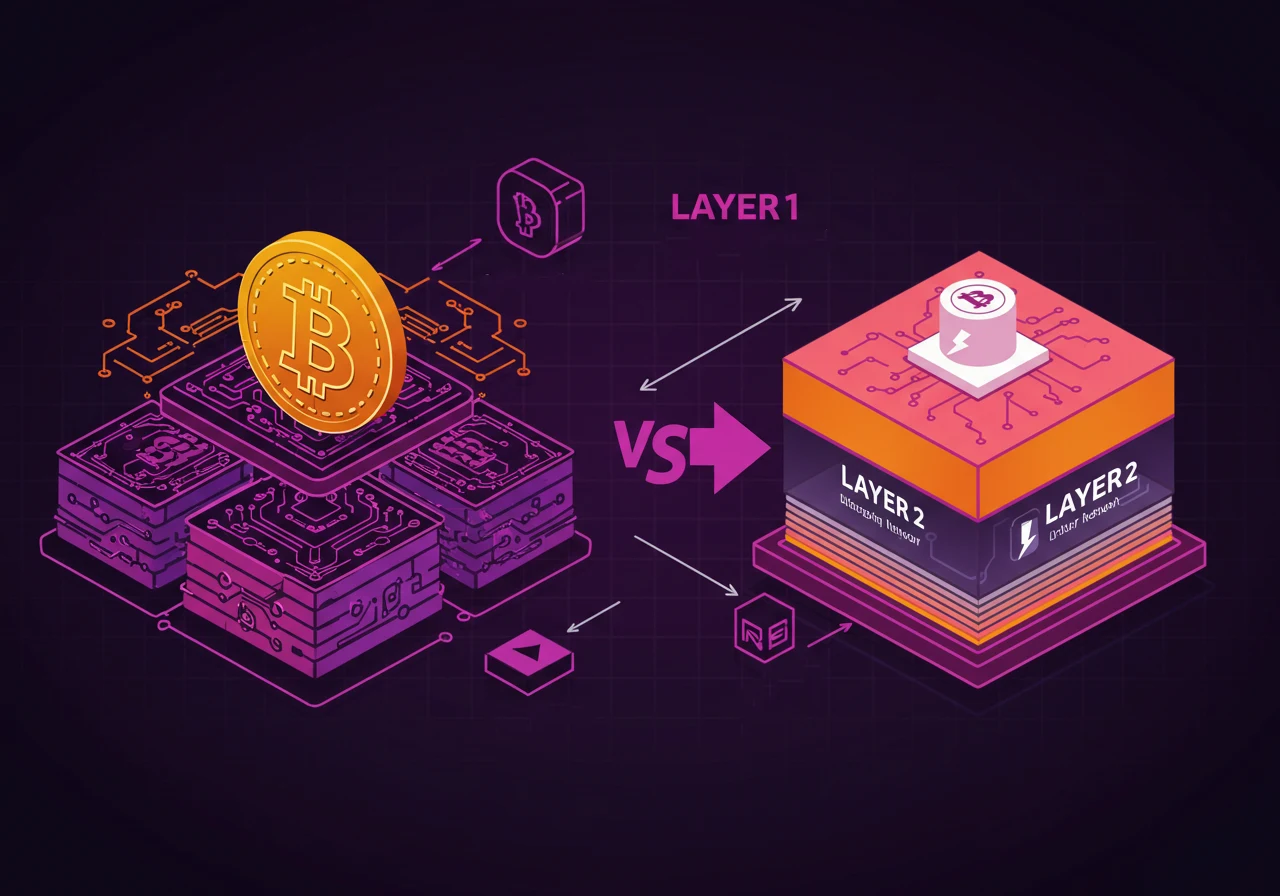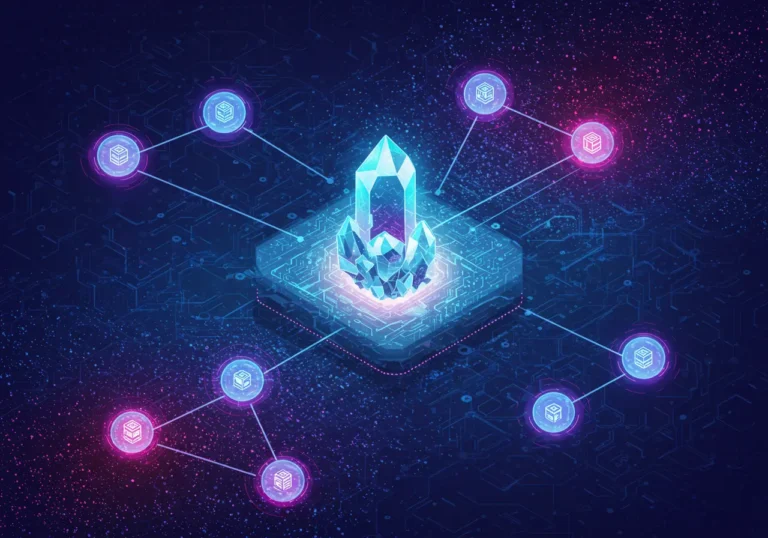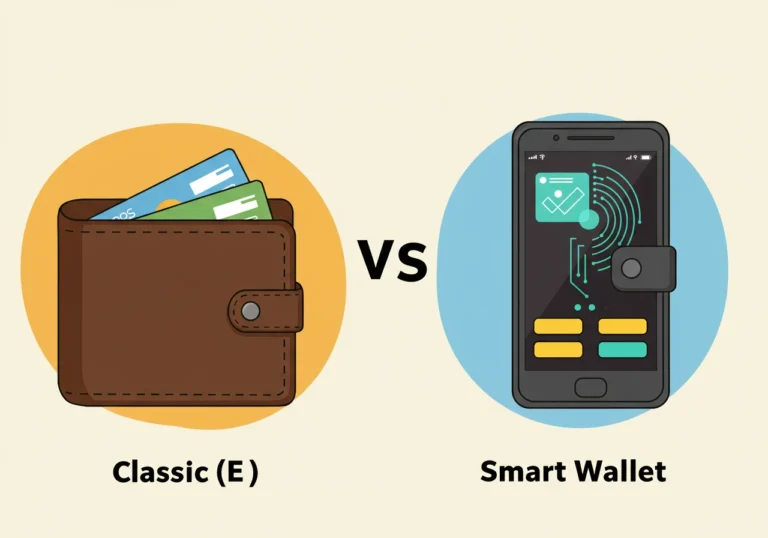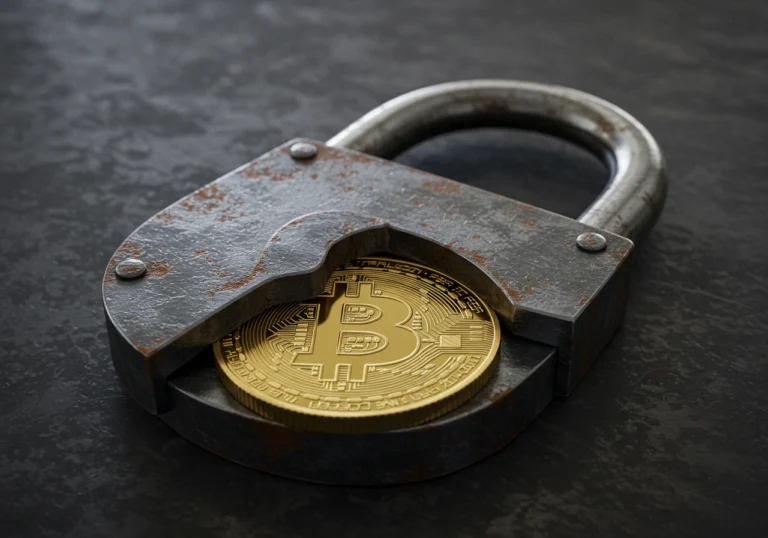Layer 1 vs Layer 2 Blockchains: The Key Differences Explained
Layer 1 vs Layer 2 is a phrase you’ll hear a lot. The short way to say it: Layer 1 is the main blockchain — the foundation. Layer 2 sits on top, helping things move faster and cost less while the base layer keeps the final record. In the next sections we’ll walk slowly through what each layer does, why both matter, and how you can use them without getting puzzled.
Layer 1 vs Layer 2 — what they are
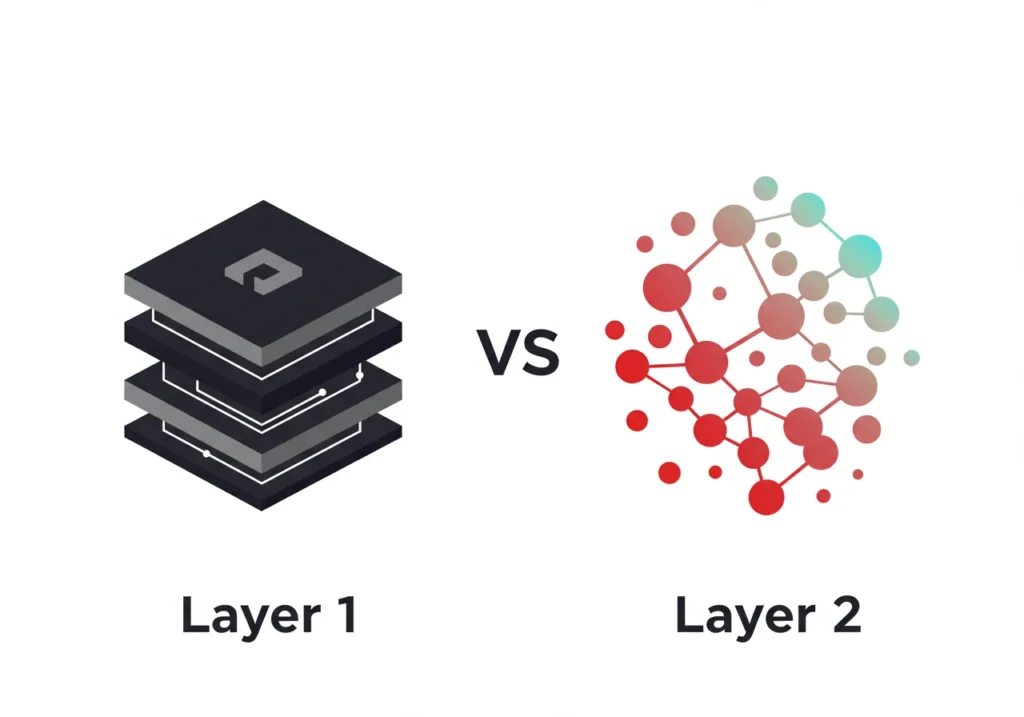
Layer 1 vs Layer 2 are terms that describe levels in the blockchain stack.
Layer 1 is the base network: Bitcoin, Ethereum, Solana. It keeps the official ledger, enforces rules and provides the strongest security. When a transaction is settled here, it is part of the official history — that’s final.
Layer 2 is built on top of Layer 1. It takes many small steps off the main chain, processes them more cheaply or faster, then reports back to Layer 1. Think of Layer 2 like a local bus system feeding a central train station. It handles the busy, short trips so the main line doesn’t choke.
Below, we’ll look at the differences between Layer 1 and Layer 2 blockchains, show examples, and explain the trade-offs.
Why we have layers at all
Blockchains trade among three things: security, decentralization, and speed. Improving one often weakens another. Layer 1 focuses on security and decentralization. That makes it a strong base, but it can be slow and pricey when many people use it.
Layer 2 tries to keep security while giving speed and lower cost. It lets developers and users scale activity without changing the bedrock of the network. That’s the big reason Layer 2 exists.
What Layer 1 does — the basics
Layer 1 does the heavy lifting of trust:
- It runs the consensus rules that everyone follows.
- It stores the definitive ledger.
- It verifies and finalizes transactions.
- It protects the network with large sets of validators or miners.
Because Layer 1 is the final judge, operations here are seen as the most secure. But when many people act at once, fees can rise and delays appear. That’s where a user sees the problem and looks for a Layer 2 alternative.
What Layer 2 does — the basics
Layer 2 improves performance without replacing Layer 1.
- It groups many small transactions into batches.
- It processes actions off-chain or on a side system.
- It posts proofs or summaries back to Layer 1 for finality.
- It cuts fees and speeds up everyday interactions.
There are different ways to do Layer 2: state channels (private, quick back-and-forth), sidechains (parallel chains that talk to the main chain), and rollups (which bundle work and post proofs). Each design has ways to keep things secure while gaining speed.
Clear comparison: Layer 1 vs Layer 2 features
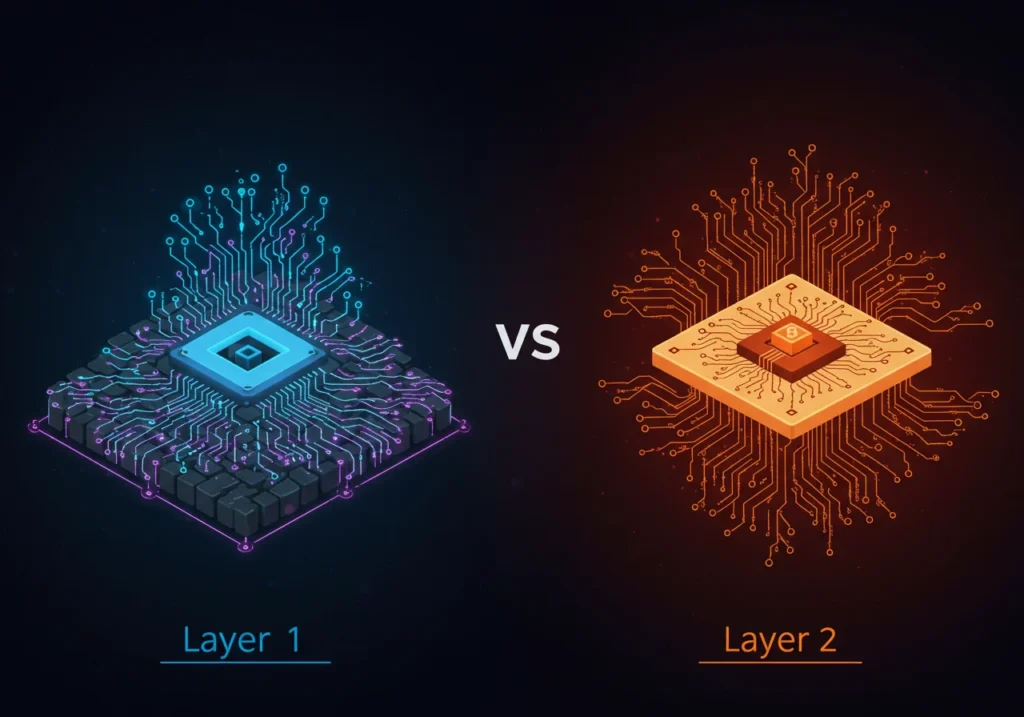
Let’s make a short, practical table of Layer 1 and Layer 2 blockchain features
- Security: Layer 1 = strongest. Layer 2 = relies on Layer 1 for final checks.
- Speed: Layer 1 = slower when busy. Layer 2 = much faster for many small actions.
- Fees: Layer 1 = can be high under load. Layer 2 = lower per action.
- Use cases: Layer 1 = settlement, custody, big transfers. Layer 2 = micro-payments, games, frequent trades.
- Complexity: Layer 1 = simpler for users. Layer 2 = adds technical steps but saves money/time.
If you want fast and cheap daily use, Layer 2 often wins. For irreversible settlement and long-term storage, Layer 1 is where you feel safest.
Real examples to make it concrete
- Ethereum is a Layer 1. It is secure and supports smart contracts. But when many people use it, gas fees spike.
- Optimism and Arbitrum are Layer 2s (rollups) on Ethereum. They let users swap tokens or mint NFTs cheaply, then settle the final results on Ethereum.
- Bitcoin is Layer 1. The Lightning Network sits on top as a Layer 2 for instant, tiny payments like buying a coffee.
These concrete examples show how different pieces serve different needs.
How Layer 2 keeps security without replacing Layer 1
Layer 2 usually posts proof back to Layer 1 — that gives a final “stamp” of truth.
- Optimistic rollups post batches and let others challenge bad batches during a window. If a bad batch is shown, the system reverts it.
- ZK-rollups post cryptographic proofs that the batched transactions are correct; the base chain verifies a small proof instead of redoing every step.
Both systems let Layer 2 be fast while Layer 1 remains the final safety net.
Trade-offs and headaches to watch for
Layer 2 helps, but it brings new things to think about:
- Withdrawal time: Moving money back to Layer 1 can take time.
- Bridges: Moving assets across layers requires bridges; bridges have been targets of hacks.
- Complexity: More layers mean more moving parts. Mistakes can be costly.
- Usability: Some Layer 2s require extra steps or waiting periods that confuse newcomers.
These are real issues. Yet for many users, the benefits outweigh the drawbacks.
Practical advice for everyday users
Here are simple rules you can follow:
- Keep your long-term holdings on Layer 1 or in cold storage.
- Use Layer 2 for active trading, small buys, and games.
- Check withdrawal times before moving funds between layers.
- Be cautious with bridges; use reputable solutions and small test transfers.
- Learn which Layer 2 a dApp uses before you start — it affects speed and fees.
A few small habits make life smoother and cheaper.
Why both layers will keep being important
Layer 1 upgrades will happen. Sharding and better consensus are in progress on many chains. Still, Layer 2 provides a quick, flexible way to scale. Over time, the lines blur: some Layer 1 improvements and Layer 2 designs combine. The future is layered, not replaced.
Short conclusion
Layer 1 and Layer 2 work together. Layer 1 gives finality and the strongest security. Layer 2 gives speed and lower costs for daily use. For most people the smart approach is mixed: keep big sums safe on Layer 1, use Layer 2 for the small, frequent moves. That little balance makes blockchain useful and less expensive for everyday life.
Quick Summary
- Layer 1 vs Layer 2: Layer 1 is the foundation; Layer 2 is the scaling layer on top.
- Layer 1 = strong security and final settlement.
- Layer 2 = faster transactions and lower fees for everyday use.
- Watch for bridges and withdrawal times when moving funds between layers.
- Use Layer 2 for frequent actions; Layer 1 for long-term custody.
Frequently Asked Questions
Q: Are Layer 2 transactions safe?
A: Many are. Some Layer 2s use cryptographic proofs (very safe); others rely on challenge windows (safe if monitored). Always check the Layer 2’s model.
Q: How long to move funds back to Layer 1?
A: It varies. Some systems take minutes; others use a waiting period of hours or days depending on dispute windows.
Q: Can Layer 1 upgrades replace Layer 2?
A: Not likely. Upgrades help, but Layer 2 gives flexibility and extra capacity developers can use without changing the base layer.
Q: What should a beginner do?
A: Learn which layer a dApp uses. Keep big sums on Layer 1 and use Layer 2 for cheaper, faster interactions. Do small test transfers when using new bridges.
Table of Contents

Hello, I’m Edmilson Dias, founder of CoinBringer. I created this platform to guide people through the fast-moving world of cryptocurrency with clarity and safety. With years of research in blockchain and digital security, my goal is to translate complex topics into practical knowledge, offering reliable tutorials, safety insights, and guidance for both newcomers and experienced users.
Discover more from CoinBringer
Subscribe to get the latest posts sent to your email.

